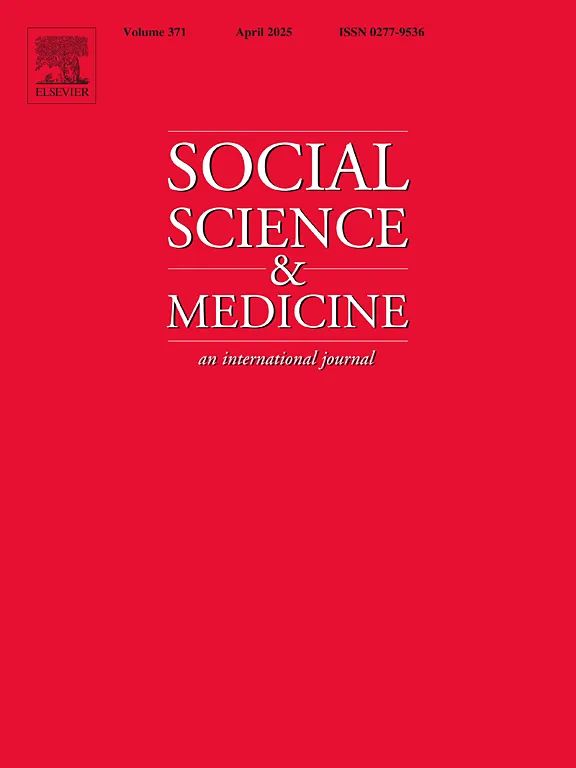“学术论著”是社会发展与公共政策学院推出的学术栏目,介绍本院教师新近发表的前沿研究。本期推荐文章来自人口研究所潘泽瀚副教授及其合作者。
——编者按
Pan, Z., Yang F., Yang N., & Nie, R. (2025). Health disparity among older adults in urban China: Does labor migration matter? Social Science & Medicine. Doi: 10.1016/j.socscimed.2025.117925
近年来,中国经历了大规模劳动力流动和人口老龄化的双重趋势。大量劳动力从欠发达地区流向沿海和内陆核心城市,但这些迁移如何影响城市老年人的健康差异尚不明确。近日,我院人口研究所潘泽瀚、杨飞扬与中国社会科学院应用经济系杨楠、上海金融与法律研究院研究员聂日明合作的论文“Health disparity among older adults in urban China: Does labor migration matter?”发表于社会医学及健康经济领域国际著名期刊Social Science & Medicine。
内容简介
该研究基于2005和2015年全国1%人口抽样调查微观数据与2010-2020年省级面板数据,运用shift-share工具变量法,探讨劳动力流动是否加剧或缓解了城市老年人的健康不平等,并揭示背后的关键机制。
研究发现劳动力净流入较高的地区,如上海、广东等沿海城市,城市老年人的整体健康水平更高,且不同收入、教育水平的老年人之间的健康差距更小。从数据来看,2010-2015年间,劳动力迁移导致城市老年人自评“健康”概率的地区差异扩大了约9.2个百分点。
这其中的关键机制就是社会福利:劳动力迁移通过改善目的地的财政状况(如税收增加),提升了当地养老金和医疗保险的覆盖水平与资金规模,尤其惠及依赖居民保险(如城乡居保)的低收入老年人。与此同时,受户籍限制和参保年限要求,外来务工人员自身却难以享受同等的社会福利,形成“本地居民受益,外来劳动者受限”的不平等结构。
从区域层面看,发达地区因劳动力流入增强了财政能力,能提供更优质的公共服务;而劳动力流出的欠发达地区面临老龄化加剧和福利资源短缺的双重压力,导致区域健康差距扩大。
也就是说,劳动力迁移在促进经济发展的同时,也通过社会福利制度间接放大了区域间和群体间的健康不平等。未来需通过制度创新和资源再分配,实现“迁移红利”的公平共享,助力健康老龄化社会的构建,因此,该研究建议:
·推动社会福利公平化:打破户籍限制,提升外来务工人员的城市社会福利便携性(如医疗保险、养老金),减少“本地-非本地”群体的福利差异。
·加强中央统筹协调:中央应通过财政转移支付,支持欠发达地区应对老龄化挑战,避免区域健康差距进一步扩大。
·提升养老服务供给:重视外来务工人员在养老护理行业的作用,通过培训和政策支持,缓解城市养老劳动力短缺问题。
论文摘要
China has seen a surge in labor migration and widening regional health disparities among urban older residents since the late 1990. However, the relationship between labor migration and these disparities remains unknown. This study employs the shift-share instrument method to explore the association between labor migration and the self-rated health among urban older residents with the microdata from the 1% National Population Sample Survey (2005 and 2015) and provincial panel data (2010–2020). The results indicate that regions with higher net labor inflow exhibit improved average health levels and reduced health inequality among local older adults with varying socioeconomic statuses. Between 2010 and 2015, labor migration led to a 9.21 percentage point increase in the regional disparity of self-rated “healthy” probabilities among urban older residents. The key mechanism underlying these effects is the positive effects of labor migration on the wellbeing of certain group of urban older residents. The findings of this study suggest that social benefits access inequality between migrants and non-migrants, and the health disparities among urban older adults underscore broader structural inequality in China.
作者简介

潘泽瀚,复旦大学社会发展与公共政策学院人口研究所副所长、副教授。入选上海市东方英才计划青年项目、上海市晨光计划。研究领域为人口迁移与区域发展,已有成果发表于Journal of Rural Studies, China Economic Review, Social Science & Medicine, Health & Place, Population Space and Place, Cities,《人口研究》、《中国人口科学》、《地理学报》等国内外著名期刊。

杨飞扬,复旦大学社会发展与公共政策学院人口研究所博士生。

杨楠,中国社会科学院大学应用经济学院博士生。

聂日明,上海金融与法律研究院研究员,主要关注中国政治经济、商业创新,他经常在中文媒体上发表观点,是《金融时报》中文版的专栏作家。

